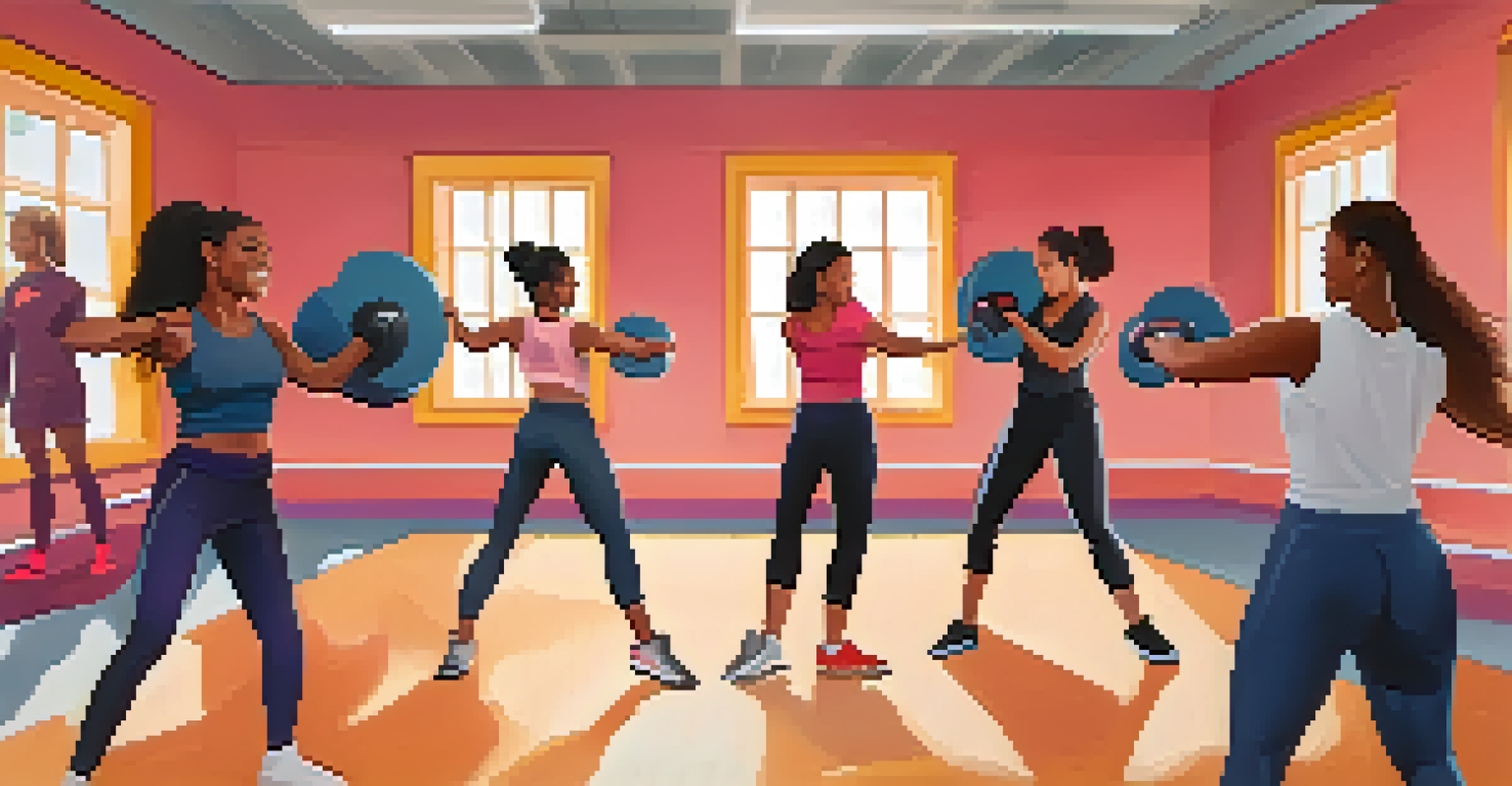Understanding the Basics of Self-Defense Techniques for Women

The Importance of Self-Defense for Women
Understanding self-defense is crucial for women in today's world. It empowers individuals, giving them confidence and a sense of security. Beyond physical skills, self-defense training fosters awareness of surroundings and promotes personal safety.
Self-defense is not just a set of techniques, it's a mindset. It's about being aware and prepared, both physically and mentally.
Many women may feel vulnerable in various situations, whether walking alone at night or traveling in unfamiliar areas. Self-defense knowledge can be a powerful tool, transforming fear into strength. This empowerment can positively impact mental well-being, creating a more assertive and aware individual.
Moreover, self-defense is not solely about physical confrontation; it teaches conflict resolution and risk assessment. Learning to identify potential threats and how to avoid them can be just as important as knowing how to react in a dangerous situation.
Basic Principles of Self-Defense Techniques
At its core, self-defense revolves around a few fundamental principles. Awareness, avoidance, and assertiveness are key components that every individual should embrace. These principles help in recognizing potential threats and responding appropriately.

For example, being aware of your surroundings can prevent dangerous situations before they escalate. If you notice someone following you, it’s important to change your route or seek help. This proactive approach can often defuse a potentially harmful encounter without physical confrontation.
Empowerment Through Self-Defense
Learning self-defense boosts confidence and transforms fear into strength for women in various situations.
Additionally, assertiveness plays a significant role in self-defense. Projecting confidence can deter aggressors, as many are looking for easy targets. By practicing assertive body language and communication, women can enhance their safety significantly.
Common Self-Defense Techniques to Practice
There are several self-defense techniques that are effective and easy to learn. Strikes such as palm heel strikes, knee strikes, and simple kicks can be powerful tools. These techniques leverage body mechanics to create maximum impact with minimal effort.
The best defense is a good awareness of your surroundings. Trust your instincts; they are a powerful tool.
For instance, a palm heel strike delivered to the nose can disorient an attacker, giving you time to escape. Similarly, a knee strike to the groin is a swift way to incapacitate an assailant. Practicing these moves regularly can instill muscle memory, making them more instinctual in a stressful situation.
Moreover, it's beneficial to learn how to escape from common holds or grabs. Techniques that focus on breaking free from wrist grabs or bear hugs can empower women to regain control and distance themselves from danger.
The Role of Confidence in Self-Defense
Confidence is a crucial component when it comes to self-defense. It’s not just about knowing techniques; it’s about believing in your ability to use them effectively. When women carry themselves with confidence, they often deter potential threats.
Think of it this way: a confident posture and a steady gaze can communicate strength to onlookers. This presence can make an aggressive individual think twice before approaching. Self-defense classes often emphasize this psychological aspect, teaching participants to embrace their inner power.
Key Techniques to Practice
Effective self-defense techniques like strikes and escapes can be easily learned and practiced to enhance safety.
Building confidence takes time and practice, but it’s a worthwhile endeavor. Engaging in self-defense training regularly can enhance both skills and self-assurance, creating a positive feedback loop that boosts overall well-being.
Choosing the Right Self-Defense Class
Finding the right self-defense class can feel overwhelming, given the many options available. It's essential to seek a program that aligns with your personal goals, whether it’s physical fitness, self-defense techniques, or both. Look for classes that focus on realistic scenarios women may face.
Consider instructors’ qualifications and their teaching style. A good instructor should create a safe and supportive environment while offering practical advice and techniques. Reading reviews or attending a trial class can help gauge whether a class is a good fit.
Additionally, community centers and local gyms often offer self-defense workshops. These can be a great way to meet like-minded individuals while learning valuable skills, fostering a sense of camaraderie and mutual support.
Self-Defense Tools for Enhanced Safety
In addition to physical techniques, various tools can enhance personal safety. Items like pepper spray, personal alarms, and keychain self-defense tools can provide an extra layer of protection. However, it’s vital to understand how to use these tools effectively.
For example, pepper spray can be an effective deterrent when used correctly, but it requires practice to aim accurately under stress. Familiarizing yourself with any tool before an encounter is crucial, as confidence in its use can make a significant difference.
Mindset Matters in Safety
Maintaining a self-defense mindset through awareness and mindfulness is crucial for avoiding dangerous situations.
Moreover, self-defense tools should complement, not replace, physical self-defense training. Relying solely on gadgets can create a false sense of security. Instead, integrating tools with learned techniques can ensure a comprehensive approach to personal safety.
Maintaining a Self-Defense Mindset
Self-defense is as much about mindset as it is about physical skills. Cultivating a self-defense mindset means constantly being aware of your environment and potential threats. This proactive approach can help you avoid dangerous situations before they escalate.
Practicing mindfulness and situational awareness can enhance your ability to respond effectively. Simple habits, like keeping your phone away while walking or using headphones with one ear free, can help maintain awareness. These small changes can make a big difference in personal safety.

Ultimately, maintaining this mindset is an ongoing process. Engaging with self-defense communities or continuously practicing techniques can reinforce this awareness, keeping safety a priority in everyday life.